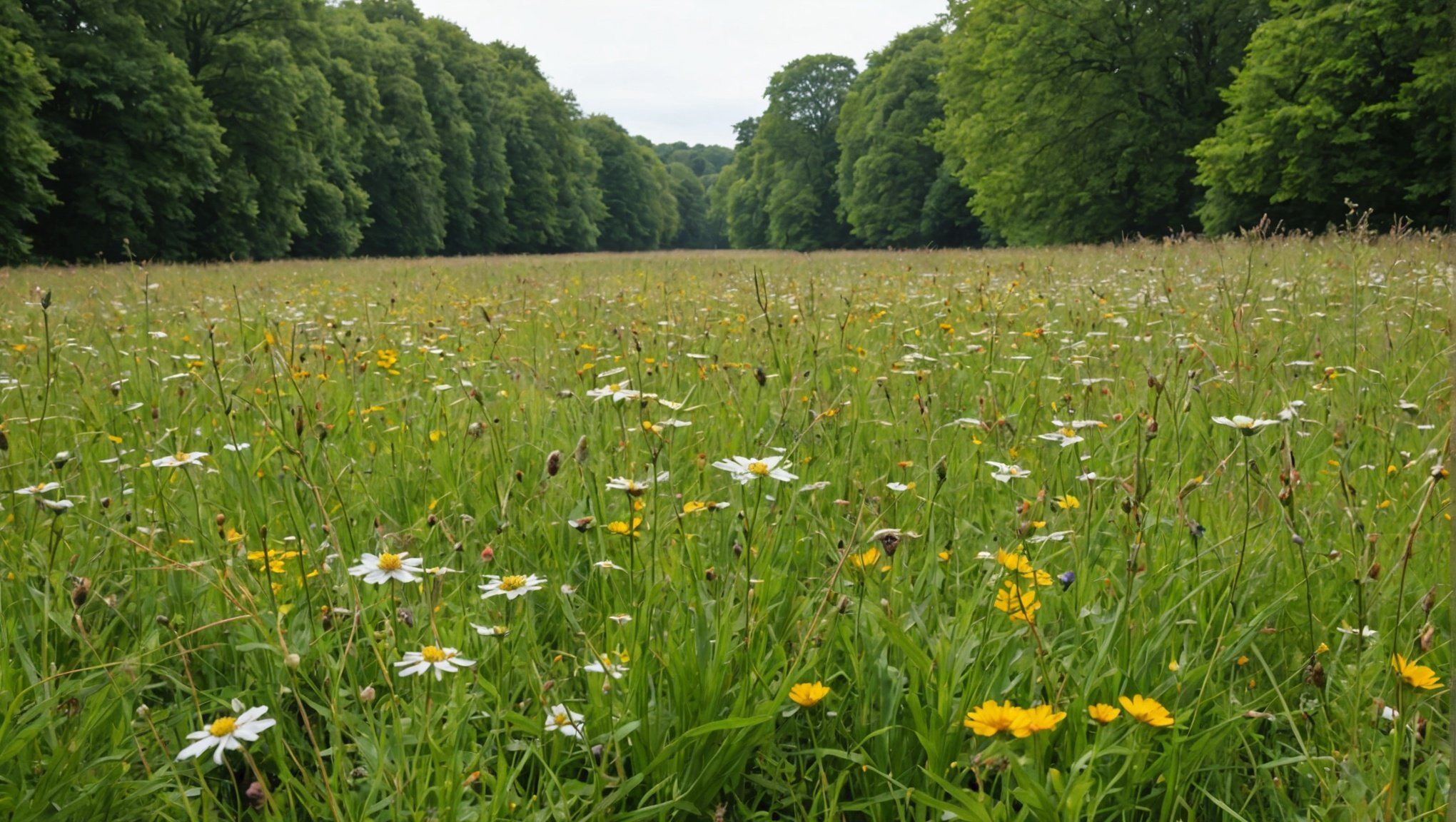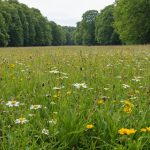UK meadows are fading, taking with them crucial insect biodiversity. Reviving these landscapes through rewilding offers a practical solution. This transformation not only enhances habitat but also supports vital ecosystems. Discover how innovative rewilding techniques reclaim these meadows, transforming them into thriving biodiversity hubs. By unlocking the secrets of nature’s resilience, we can ensure a brighter, more vibrant future for our insect populations and, ultimately, ourselves. Join us on this journey to rejuvenate our countryside.
Understanding Rewilding and Its Importance
Rewilding is an innovative conservation approach aimed at restoring natural processes and wilderness areas, allowing ecosystems to self-regulate. It involves reintroducing native species and removing human-imposed barriers to natural development. This practice has gained traction for its potential to enhance insect biodiversity, crucial for maintaining healthy ecosystems.
Lire également : Empowering UK Residents: Top Ways to Support the Conservation of Local Native Orchid Species
Historically, the UK’s meadows played a significant role in sustaining diverse habitats. These grasslands supported a rich tapestry of life, offering food and shelter for numerous insect species. However, agricultural intensification and urban development have led to a drastic decline in these meadows, threatening the intricate web of life they once supported.
Insect biodiversity is a cornerstone of ecosystem health, providing essential services such as pollination, nutrient cycling, and pest control. A diverse insect population ensures resilience against environmental changes and supports a balanced food chain. By promoting rewilding efforts, the UK can restore its meadows, bolstering insect populations and, consequently, the overall health of its ecosystems.
A voir aussi : Smart Strategies to Spot and Safeguard Your British Garden from Invasive Plant Species
Rewilding not only aids in the recovery of insect biodiversity but also fosters a sustainable environment where nature can thrive. It offers a practical solution to counteract the adverse effects of human activities, ensuring a vibrant and resilient natural world for future generations.
The Current State of UK Meadows
The UK meadows are experiencing a significant decline in biodiversity, raising concerns about the health of these vital ecosystems. Historically, these meadows were rich in species diversity, but recent studies indicate a worrying trend of biodiversity decline. This decline is largely attributed to factors such as agricultural intensification, urban expansion, and climate change, which have altered natural habitats and disrupted ecological balance.
The reduction in insect populations is particularly alarming. Insects play a crucial role in providing essential ecosystem services such as pollination, which supports food production, and nutrient cycling, which maintains soil health. The loss of these services can have cascading effects, impacting plant growth, food availability, and overall ecosystem resilience.
UK meadows are essential for maintaining ecological balance. They act as carbon sinks, help in flood control, and support a wide range of species. The decline in these areas threatens not only the insects but also the broader ecological networks that depend on them. Understanding and addressing the factors contributing to this decline is critical for preserving the biodiversity and functionality of UK meadows, ensuring they continue to provide invaluable ecosystem services.
Benefits of Rewilding for Insect Populations
Rewilding offers significant biodiversity benefits by creating thriving habitats for various insect species. By reintroducing native flora and fauna, it restores natural processes that insects rely on for survival. This enhancement of insect habitats supports diverse life forms, ensuring ecological balance.
Increased biodiversity from rewilding efforts contributes to greater ecosystem resilience. Diverse insect populations are better equipped to withstand environmental changes, such as climate shifts or disease outbreaks. This resilience is crucial for maintaining the stability of food webs and ensuring the continuation of vital ecosystem services like pollination and nutrient cycling.
Several case studies highlight the positive outcomes of rewilding initiatives. For instance, in Knepp Estate, West Sussex, rewilding has led to a remarkable resurgence of insect life. The reintroduction of grazing animals and restoration of natural water systems have helped recreate a balanced ecosystem. This has resulted in increased sightings of rare insect species, demonstrating the effectiveness of rewilding in enhancing insect habitats.
By fostering environments where insects can thrive, rewilding not only supports biodiversity but also strengthens the overall health and resilience of ecosystems. This approach provides a sustainable solution to counteract the loss of insect populations and promotes a harmonious coexistence between human activities and nature.
Successful Rewilding Projects in the UK
In recent years, several rewilding projects in the UK have emerged as compelling case studies showcasing the potential of this conservation strategy. These initiatives have not only revitalised local ecosystems but also provided valuable insights into effective rewilding practices.
One of the most celebrated success stories is the Knepp Estate in West Sussex. This project has transformed former agricultural land into a thriving natural habitat, achieving remarkable biodiversity gains. The reintroduction of native species and the removal of artificial barriers have allowed natural processes to flourish, resulting in a resurgence of insect populations and other wildlife.
Another noteworthy project is the Carrifran Wildwood in Scotland. This initiative has focused on restoring native woodland ecosystems, leading to significant improvements in habitat quality and species diversity. The project has demonstrated the importance of long-term commitment and community involvement in achieving rewilding objectives.
These rewilding projects highlight the critical role of adaptive management and continuous monitoring in ensuring successful outcomes. They underscore the necessity of understanding local ecological contexts and involving stakeholders at every stage. By learning from these success stories, future rewilding efforts can be better tailored to local conditions, enhancing their effectiveness and sustainability.
Practical Steps for Implementing Rewilding
Implementing effective rewilding practices requires a strategic approach, focusing on selecting suitable sites, preparing them, and engaging the community.
Guidelines for Selecting Appropriate Meadows
Choosing the right meadows for rewilding involves assessing ecological potential and current biodiversity levels. Priority should be given to areas with remnants of native vegetation or those that can connect existing wildlife corridors. This ensures that the rewilding efforts contribute to a larger ecological network, enhancing biodiversity.
Techniques for Preparing and Managing Rewilding Sites
Successful implementation strategies include removing non-native species and reintroducing native plants and animals. Techniques like controlled grazing can mimic natural processes, promoting habitat diversity. Regular monitoring and adaptive management are essential to address unforeseen challenges and ensure the project’s long-term success.
Engaging Local Communities and Stakeholders
Community involvement is crucial for the sustainability of rewilding projects. Engaging local stakeholders through educational programs and participatory planning fosters a sense of ownership and support. This collaboration can lead to innovative solutions, such as community-led conservation initiatives, enhancing the effectiveness of rewilding efforts.
By following these practical steps, rewilding can be implemented successfully, promoting a harmonious balance between human activities and nature while restoring vital ecosystems.
Challenges and Considerations in Rewilding
Rewilding, while promising, faces several challenges that require careful consideration. One significant obstacle is securing adequate funding. Conservation projects often rely on limited resources, making it difficult to sustain long-term initiatives. This financial constraint can hinder the implementation of effective management strategies and the ability to adapt to unforeseen issues.
Another challenge is navigating policy frameworks. Rewilding efforts must align with existing regulations, which can be complex and restrictive. Adjusting policies to accommodate rewilding requires collaboration between conservationists, policymakers, and local communities. This collaboration is essential to ensure that rewilding projects are legally compliant and socially accepted.
Balancing human interests with ecological restoration is also crucial. Rewilding may conflict with land use priorities, such as agriculture or urban development. Strategies to overcome these challenges include engaging stakeholders through dialogue and education. By fostering understanding and support, rewilding can be integrated into broader land management plans.
To address these conservation issues, adaptive management strategies are vital. These include continuous monitoring, flexible planning, and stakeholder involvement. By anticipating potential obstacles and developing proactive solutions, rewilding projects can achieve their ecological goals while accommodating human needs. This approach ensures that rewilding contributes positively to both biodiversity and community well-being.
The Role of Policy and Funding in Rewilding
Understanding the intricacies of environmental policy and securing funding opportunities is crucial for the success of rewilding initiatives. Current policies play a significant role in shaping conservation programs and facilitating rewilding efforts. They provide a framework that guides how these projects are implemented, ensuring they align with broader conservation goals.
Several funding sources are available to support rewilding projects. These include government grants, private donations, and international conservation funds. Identifying and accessing these resources can significantly enhance the capacity to undertake extensive rewilding efforts. It’s essential for project leaders to explore various funding avenues to sustain long-term initiatives.
Policy advocacy is vital in promoting biodiversity through rewilding. Advocates work to influence policy changes that favour ecological restoration, ensuring that rewilding projects receive the necessary legislative support. This involves engaging with policymakers, raising awareness about the benefits of rewilding, and highlighting successful case studies.
By understanding and leveraging environmental policy and funding opportunities, stakeholders can effectively support rewilding initiatives. This strategic approach not only facilitates the restoration of ecosystems but also strengthens the resilience and sustainability of biodiversity conservation efforts.
Engaging the Public and Raising Awareness
Public engagement plays a pivotal role in the success of rewilding efforts. Educating the community about the benefits of rewilding can foster a sense of shared responsibility and drive conservation awareness. Various strategies can be employed to achieve this.
One effective method is organising educational workshops and seminars. These events provide a platform for experts to share insights on rewilding’s impact on biodiversity and ecosystem health. By making scientific knowledge accessible, these initiatives can inspire individuals to actively participate in conservation activities.
Community involvement is crucial. Encouraging locals to partake in hands-on conservation projects, such as planting native species or monitoring insect populations, can deepen their connection to the environment. This participatory approach not only educates but also empowers communities to become stewards of their natural surroundings.
Leveraging social media and campaigns is another powerful tool. Platforms like Instagram and Twitter can disseminate information rapidly, reaching a broad audience. Creative campaigns highlighting the importance of insect biodiversity and the benefits of rewilding can captivate public interest and galvanise action. By utilising these strategies, we can enhance public engagement and raise awareness, ensuring that rewilding initiatives receive the support they need to thrive.
















